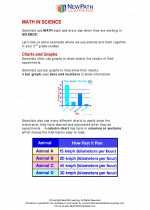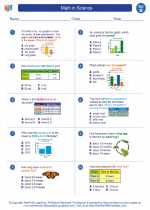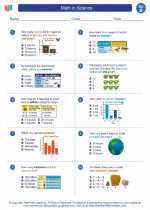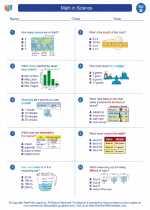Math in Science
Math is an important tool in science as it helps scientists to describe, analyze, and understand the natural world. Here are some key concepts related to the use of math in science:
Measurement
In science, measurement is crucial for collecting data and making observations. Scientists use various tools such as rulers, thermometers, and graduated cylinders to measure length, temperature, volume, and other quantities. The measurements are often expressed using numerical values and units.
Graphing and Data Analysis
Graphs are used to represent and analyze data in science. Line graphs, bar graphs, and pie charts are commonly used to display relationships, trends, and patterns in scientific data. Understanding graphs helps scientists to interpret and communicate their findings effectively.
Calculations and Formulas
Mathematical calculations and formulas are essential in science for solving problems, making predictions, and testing hypotheses. Scientists use algebra, geometry, and trigonometry to perform calculations and derive mathematical relationships that describe natural phenomena.
Units and Conversions
Units of measurement are important in science to ensure that data is consistent and comparable. Scientists often need to convert between different units, such as converting meters to centimeters or converting Celsius to Fahrenheit. Understanding unit conversions is essential for accurate scientific analysis.
Exercises
1. Convert the following measurements:
- 12 inches to centimeters
- 25 degrees Celsius to Fahrenheit
2. Plot the following data points on a graph:
- (1, 3)
- (2, 5)
- (3, 4)
3. Calculate the volume of a box with the following dimensions:
- Length = 10 cm
- Width = 5 cm
- Height = 3 cm
◂Science Worksheets and Study Guides Second Grade. Math in Science

 Worksheet/Answer key
Worksheet/Answer key
 Worksheet/Answer key
Worksheet/Answer key
 Worksheet/Answer key
Worksheet/Answer key
